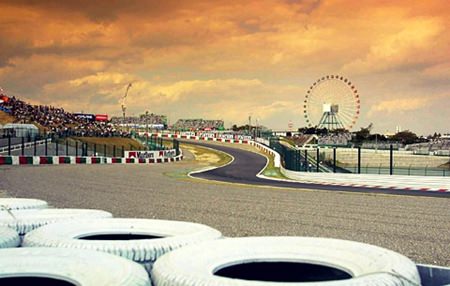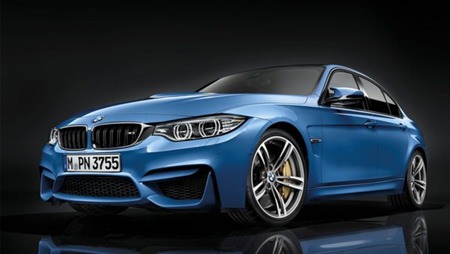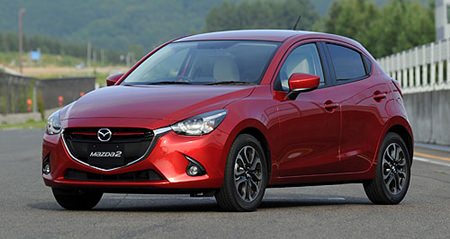 |
|
 |
|
AUTO MANIA:
by Dr. Iain Corness
[email protected] |
|
|
|

Japan GP this weekend

Suzuka Circuit
One of the greatest tracks used in Formula One today,
Japan’s Suzuka circuit is a massive test of car and driver ability.
Built by Honda as a test facility in 1962, the track was designed by
Dutchman John Hugenholz, the Hermann Tilke of his day (but don’t let
that put you off). A huge theme park was also constructed at the track,
including the famous big wheel which dominates the Suzuka skyline.
At Suzuka the race has provided the scene for many nail-biting
end-of-season deciders, including the infamous collisions involving
Alain Prost and Ayrton Senna. This week, will it be Pastor Maldonado,
Romain Grosjean, or Felipe Massa in the colliding business? Put your
money on Maldonado!
Suzuka includes some of the Grand Prix calendar’s most challenging
corners. Among the drivers’ favorites are the high-speed 130R taken at
over 300 km/h and the famous Spoon Curve taken at 140 km/h on the way in
and at 180 km/h coming out.
With the results from Singapore still in everybody’s minds, will Suzuka
be a firecracker or a fizzer? With a circuit that encourages passing, it
would have to be a better race than Singapore, and I don’t care how many
“celebrities” Bernie invited.
I will be watching from my usual perch at Jameson’s Irish Pub, Soi AR,
next to Nova Park for the 53 lap GP of the 5.8 km circuit. We have the
big screen and the dedicated F1 channel with no adverts during the race.
That’s a bonus by itself! Now, important - with the time differential
between here and Japan, the race on Sunday starts at 1 p.m. Thai time.
Qualifying on the Saturday is 12 noon. Join us for lunch and a couple of
jars before the red lights go out.
|
|
 |
New M3 another winner for BMW - other than exhaust sound

New M3
According to those testers who have driven the latest model
M3, the straight six twin turbo model does not have the evocative sound of its
predecessors - the naturally aspirated straight sixes and the recent 4.0 liter
V8.
The engine is a 3.0 liter unit with two single-scroll turbos, variable valve
lift and timing and direct fuel injection developing 317 kW/550 Nm output. Fuel
consumption is 8.3 L/100 km.
The final drive is an ‘active’ multi plate differential that acts like torque
vectoring ensuring the rear end remains stable.
The transmission itself is a seven speed dual-clutch MDCT unit with small
increments between gears to give a relative close ratio effect.
Much of the drive feel in the new M3 is even better than before. It is certainly
the fastest and quickest M3 ever with a zero to 100 km/h of around 4 seconds.
Though its sounds bad, the M3 is unreal to drive offering incredible cornering,
steering, braking, grip and acceleration.
The suspension settings can be from comfortable ranging up to firm depending on
driver selections and the car itself is crammed with luxury kit, safety and
driver assist features - it is after all the top 3-Series.
So, other than the exhaust note, there is not much to complain about with the
new M3. And the price tag, which will be also the top 3-Series!
|

|
A “tiring” situation in F1?
There is a strong sentiment amongst the F1
spectators that, “It’s all artificial and nothing to do with driver skill.” That
was in an email from a regular F1 viewer.
Unfortunately, for the past few years the F1 races have become processional. So
processional that the FIA even commissioned an “Overtaking Working Group” to
work out what could be done. For the first couple of years they did not do much.
Grooved tyres were thrown out and slicks brought back - and that did nothing.
Wings at the rear were made smaller, and that didn’t work. Wings at the front
were made smaller and raised up from track level. That did nothing as far as
overtaking was concerned, but it did bring a rash of muttering about wing
flexibility at speed. This resulted in front wings that are so strong they could
lift an elephant with one. But still there was no overtaking.
Three factors have been introduced - tyres, DRS (Drag Reduction System) and KERS
(Kinetic Energy Recovery System).
One ex-F1 racer, Jean Alesi is in no doubt as to the relative importance of each
one of these three factors. “As I see it, the biggest impact is clearly the
tyres,” said Alesi. “Towards the end of the race things get really intense,
creating some very exciting and unpredictable racing. I’m not the biggest fan of
the way the DRS is working. In principle I think the idea is great, but I’m not
convinced about the implementation. As for KERS (the power-boost system), it
doesn’t really work for me, but let’s see what unfolds.”
So now look at the tyre situation. The Pirelli tyres are quite different in
their wear characteristics, with rapid wear compounds, which also hang on well
for around 10 laps and then deteriorate so rapidly some drivers described the
feeling like “falling off a cliff”. What this has meant is that the driver has
had to think more about keeping his tyres in good shape and the strategist in
the pit lane has to juggle more variables. Get them right and you have an
advantage. Get them wrong and you have a driver struggling on unsuitable tyres,
but not enough time to pop into the pits for a change of rubber before the race
ends.
Now, there are those who are criticizing the Drag Reduction System (DRS) which
works by opening up the rear wing to decrease drag and downforce going down the
straight. This allows a slipstreaming car a better chance of passing the lead
car. This has resulted in more passing and repassing, but the critics say this
is “artificial” too. The situation actually reminds me of Formula Ford tactics,
where nobody wants to be the lead car entering the final lap as you will be
slipstreamed and then beaten every time. However, I would like to see a broad
yellow line on the track to show us viewers just where the DRS can be activated.
It is a bit confusing at present.
The final item which is supposed to spice up the racing is the KERS button. The
energy recovered during braking is stored for use to give a big boost when the
driver pushes the button. At the start, it is sensational, launching the car
past any other driver who does not have a fully charged KERS, or whose KERS is
not working. So the three factors of tyres, DRS and KERS have made the race
results more artificial. The more clever drivers and teams are working out just
how to use those three factors to their advantage, just as previously drivers
used to work out where and how to attack.
|

|
Local AAT to supply Australia with new Mazda2

New Mazda2
The fourth-generation Mazda2 went into mass production at the
Auto Alliance Thailand (AAT) plant, which is jointly operated with Ford, at
Rayong, with all of the initial output destined for Australia for November
delivery.
The new model has Mazda’s SkyActiv engine, transmission and chassis technology.
With a market share of more than nine percent, Mazda Australia has one of the
highest market penetrations in the Mazda world. Its Mazda2 fares even better,
currently holding a 12.8 percent share of the light car segment.
Once the Thai plant has fulfilled initial Australian orders, it will start
producing cars for other markets in the ASEAN group and Oceania.
Mazda’s president Masamichi Kogai said putting a new model into production at
three different plants around the world in quick succession was a “huge and
challenging task. We call Hofu plant in Japan the ‘mother plant,’ and we are
committed to ensuring that vehicles produced in Thailand and Mexico, for our
customers around the world, are built to the same high quality standards as
those in Japan,” he said.
Mazda’s BT-50 pick-up is also produced at the AAT plant, as is Ford’s Ranger
pick-up, Fiesta light car and Focus small car.
|

|
Autotrivia Quiz
Last week I mentioned that disappearing headlights were known
before WWII but were not seen again till 1966. I asked, on what car? It was the
monstrous Oldsmobile Toronado, the huge FWD vehicle from GM.
So to this week. What car do these public figures have in common? Jay Leno, Paul
Newman, Elvis Presley, Weird Al Jankovic and Princess Margaret.
For the Automania free beer this week, be the first correct answer to email
[email protected].
|
|
 |
|
 |

